Back in May, we broke the story about Casio stepping into mechanical watchmaking with the EFK-100 series. What started as a surprising leak has now turned into an officially confirmed, imminent release – and the latest details make this launch even more exciting.
Earlier today, Casio officially confirmed the launch of the EFK-100 series — the brand’s first-ever mechanical watch collection. The full EFK-100 series is expected to debut in July 2025
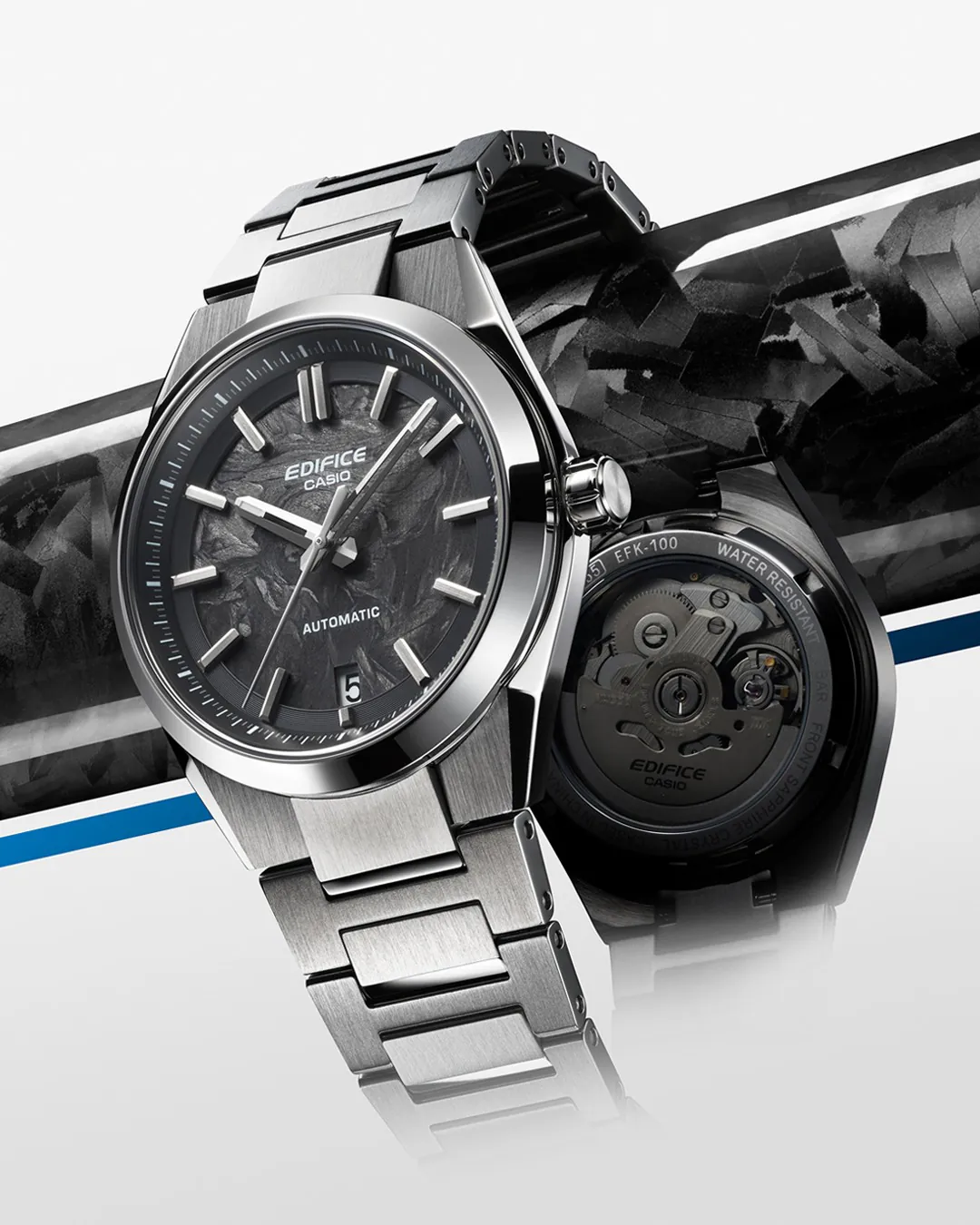
Meet the EFK-100 Lineup
Five models, three materials, and one big step for Casio
The EFK-100 series will launch with five distinct models, covering a range of case materials and dial finishes. While the core design stays consistent across the collection — a sporty yet refined Edifice silhouette with a 39mm case and 100m water resistance — each version brings its own personality. Here’s a closer look at each model.
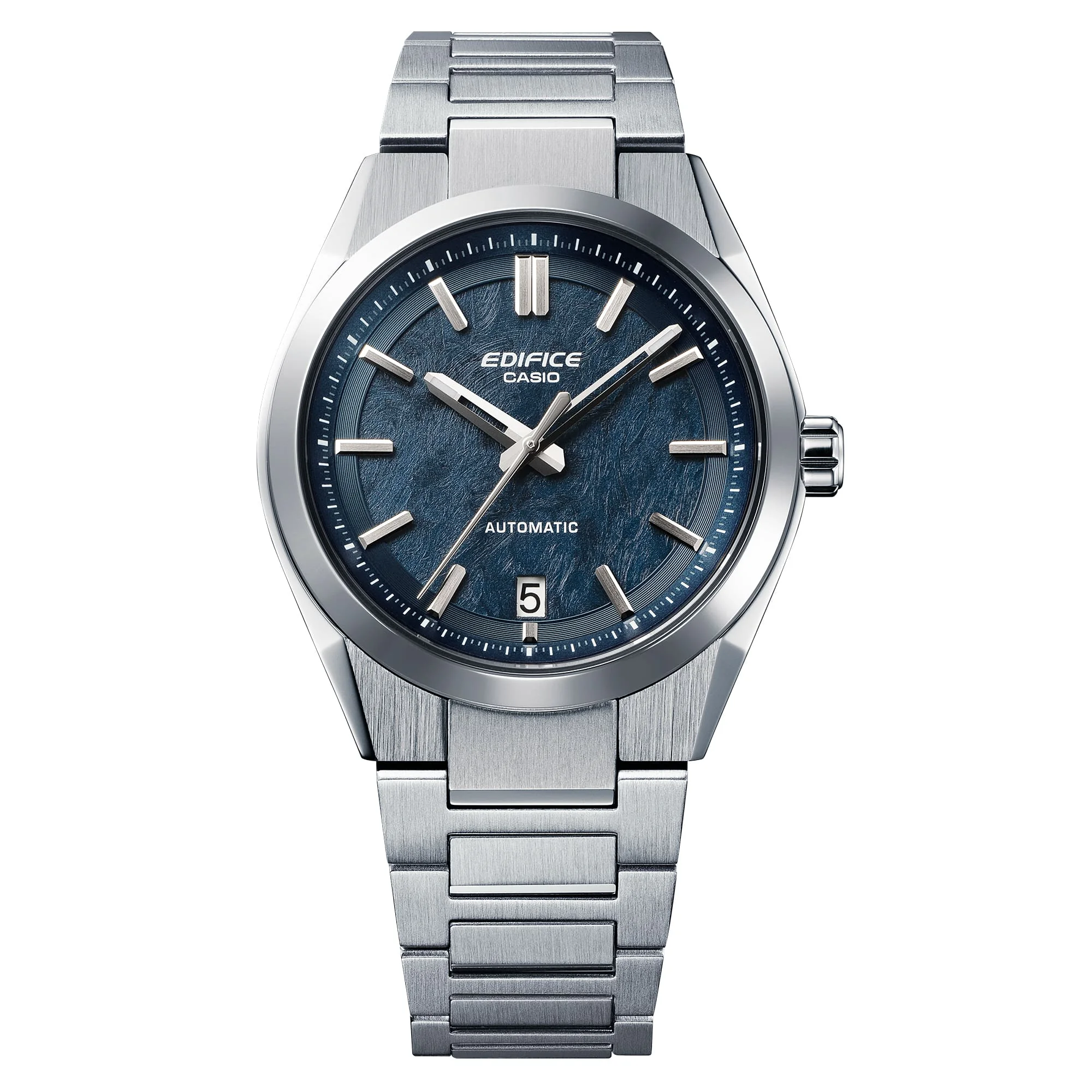
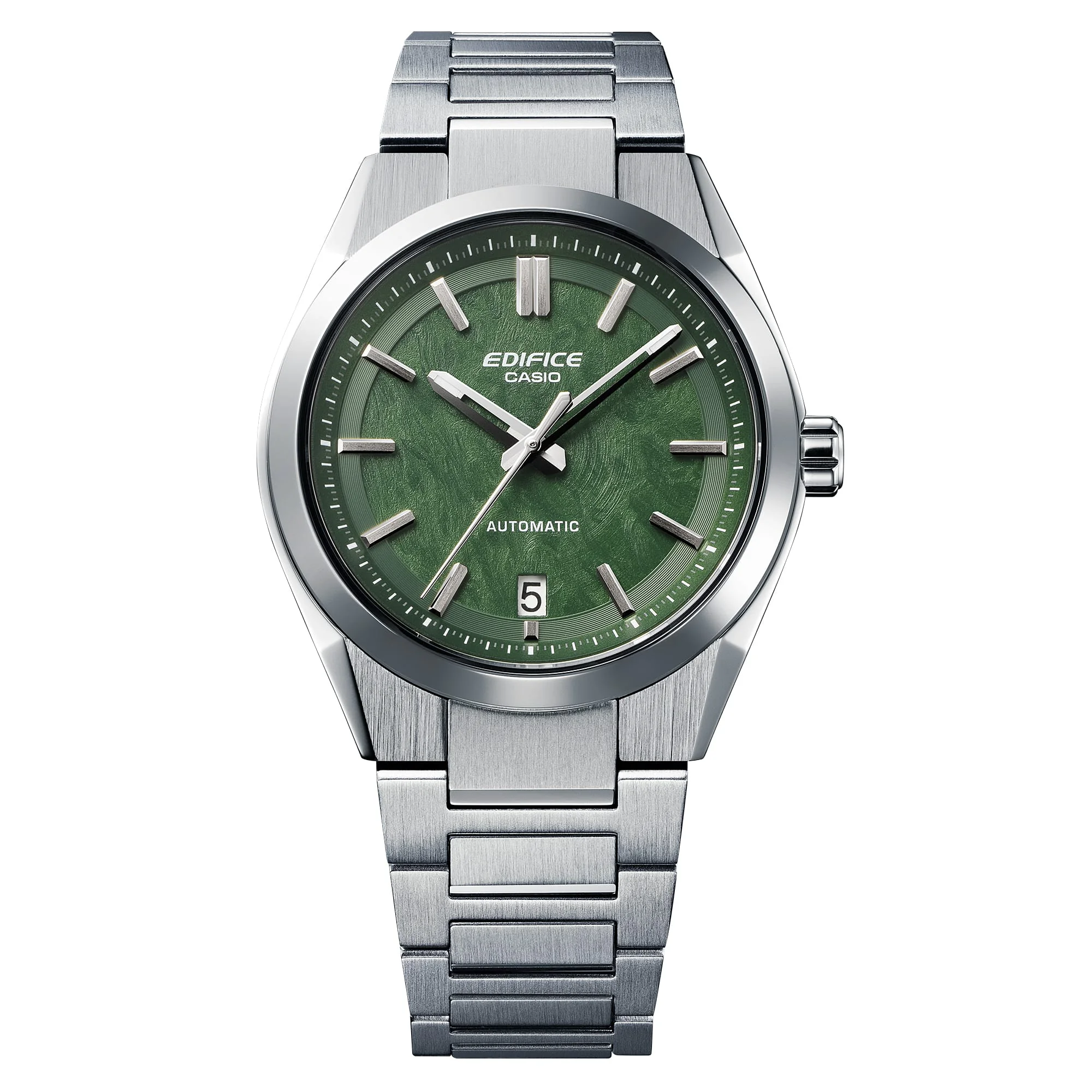
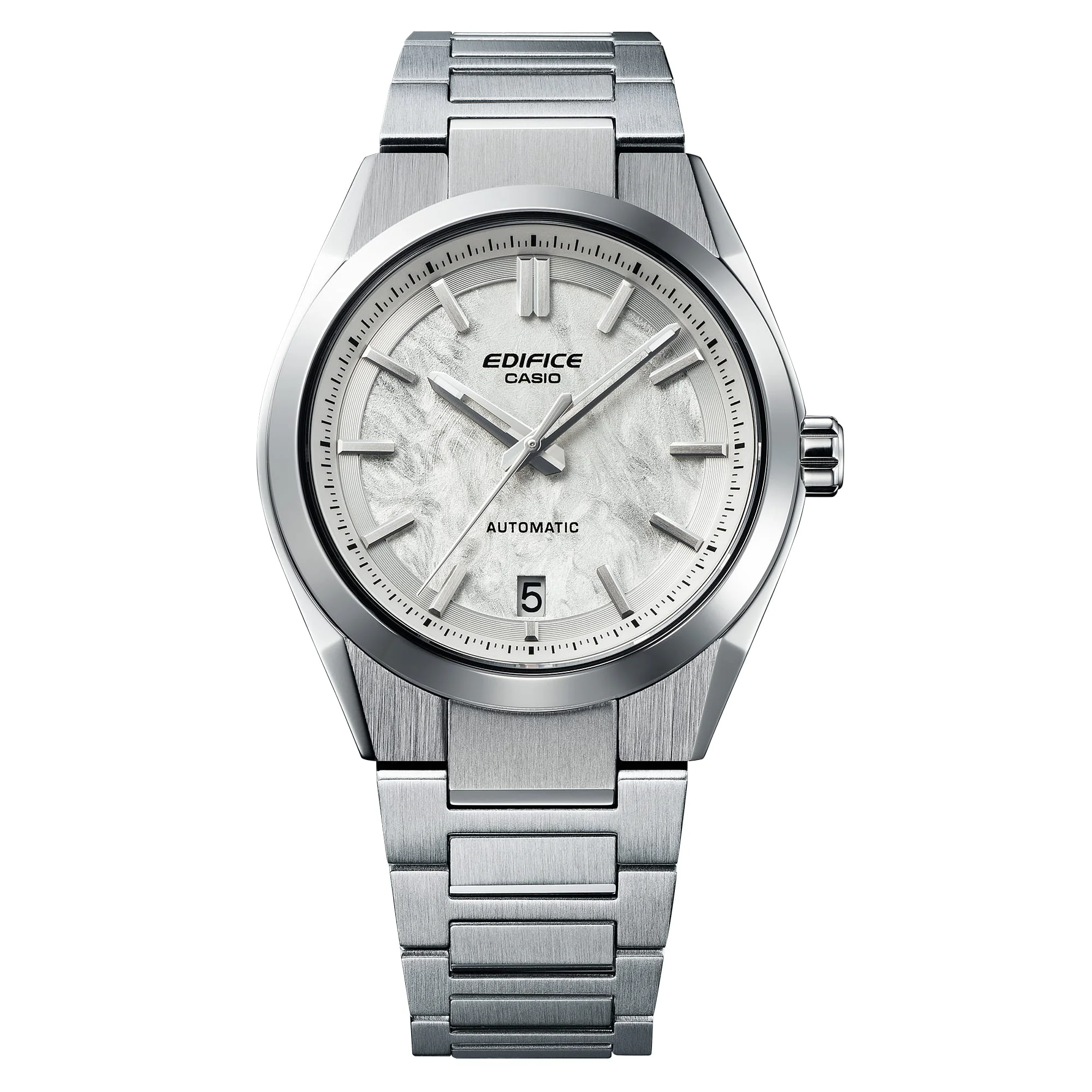
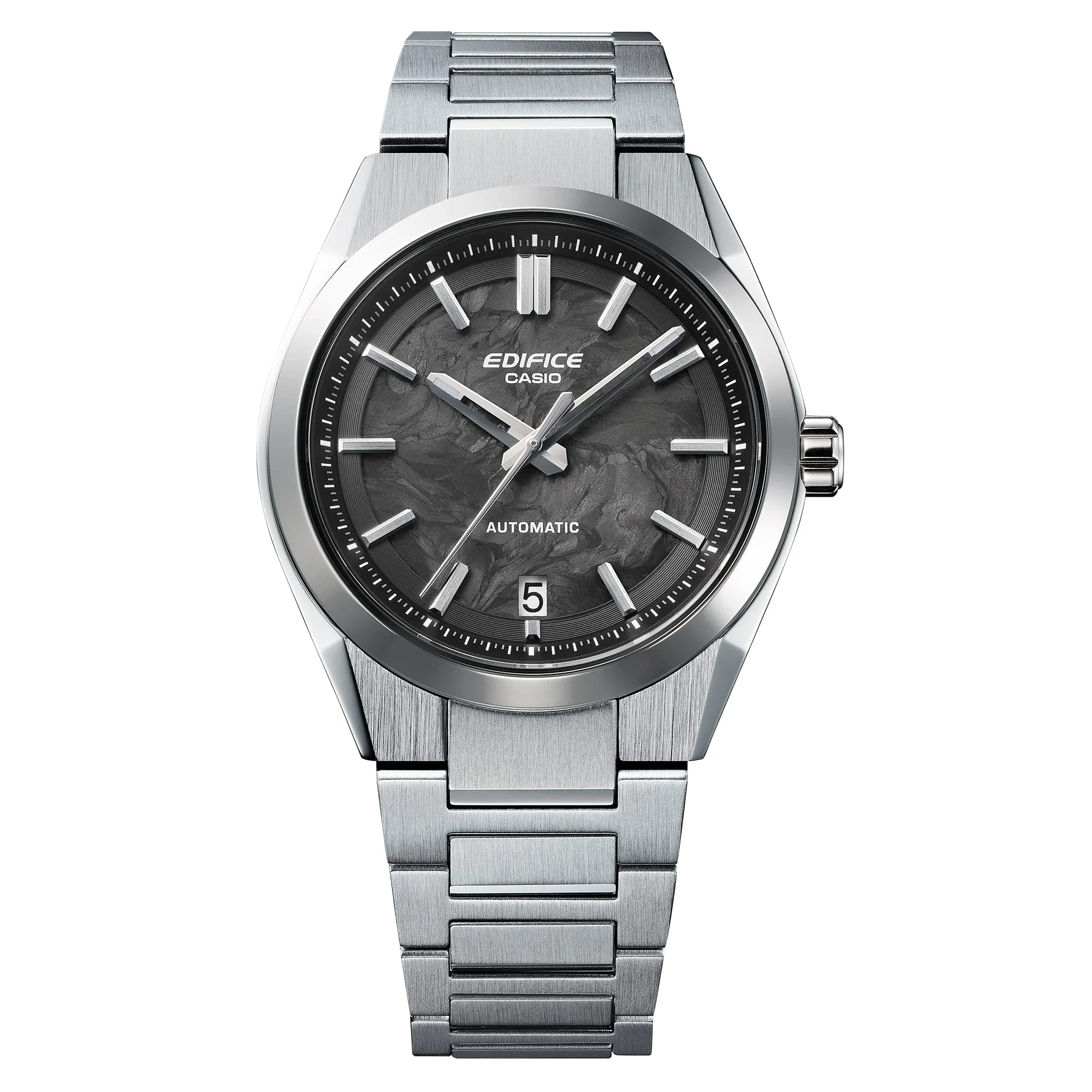
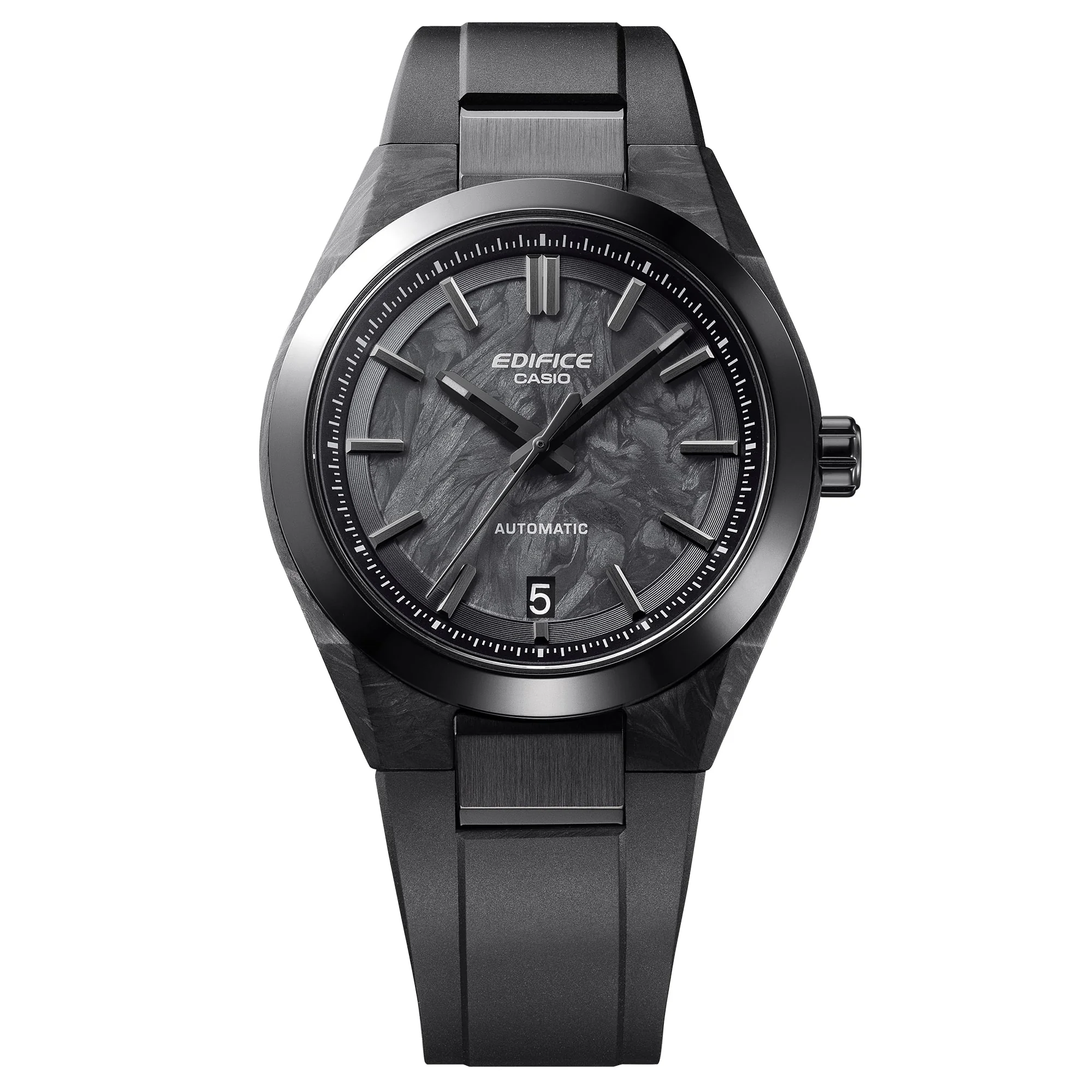
EFK-100D-2A
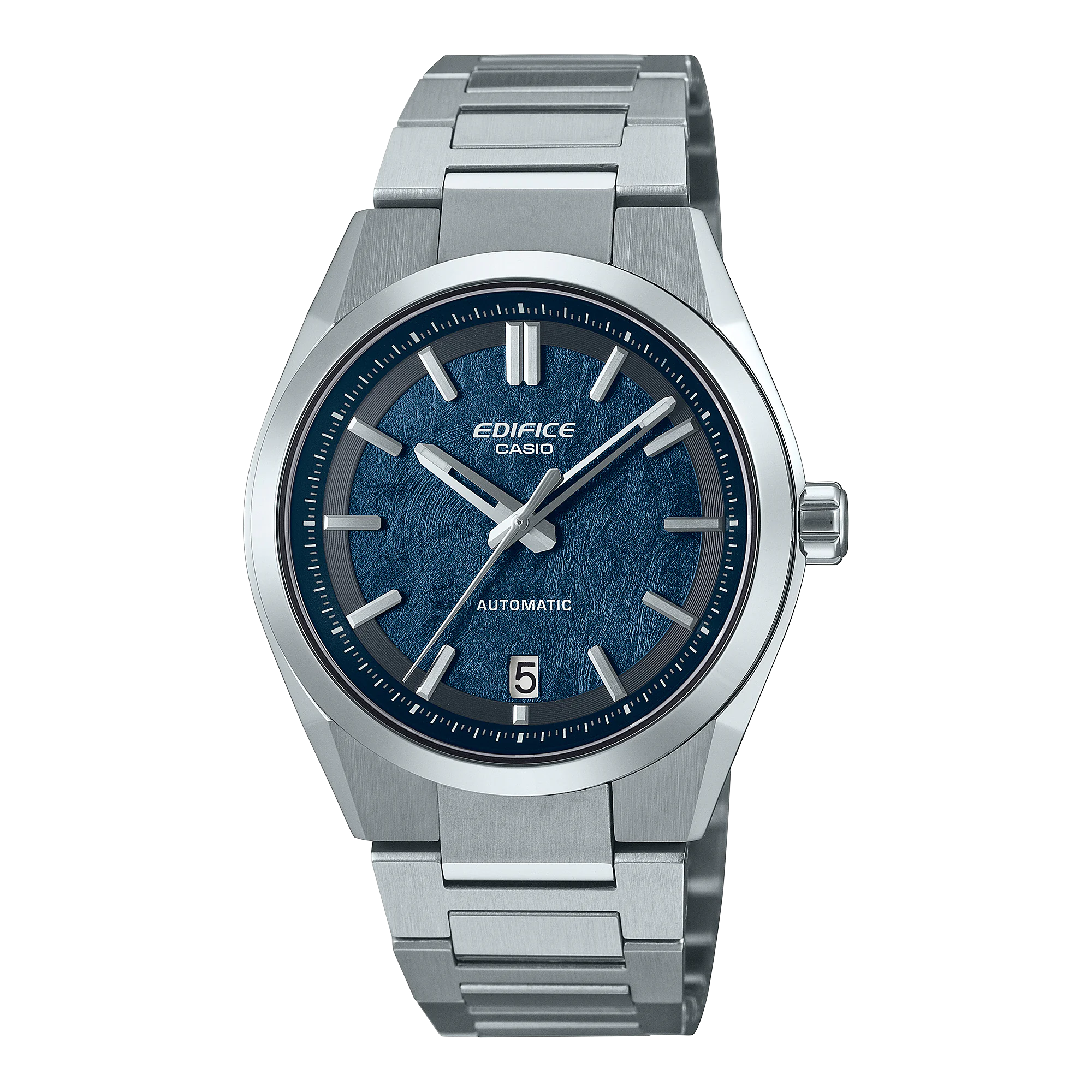
This variant features a deep navy blue dial, paired with a stainless steel case and bracelet. It leans slightly sporty but remains versatile enough for daily wear. The blue adds a splash of color without going overboard — a safe yet stylish pick for someone’s first mechanical watch, priced at ¥49,500 (~$350).
EFK-100D-3A
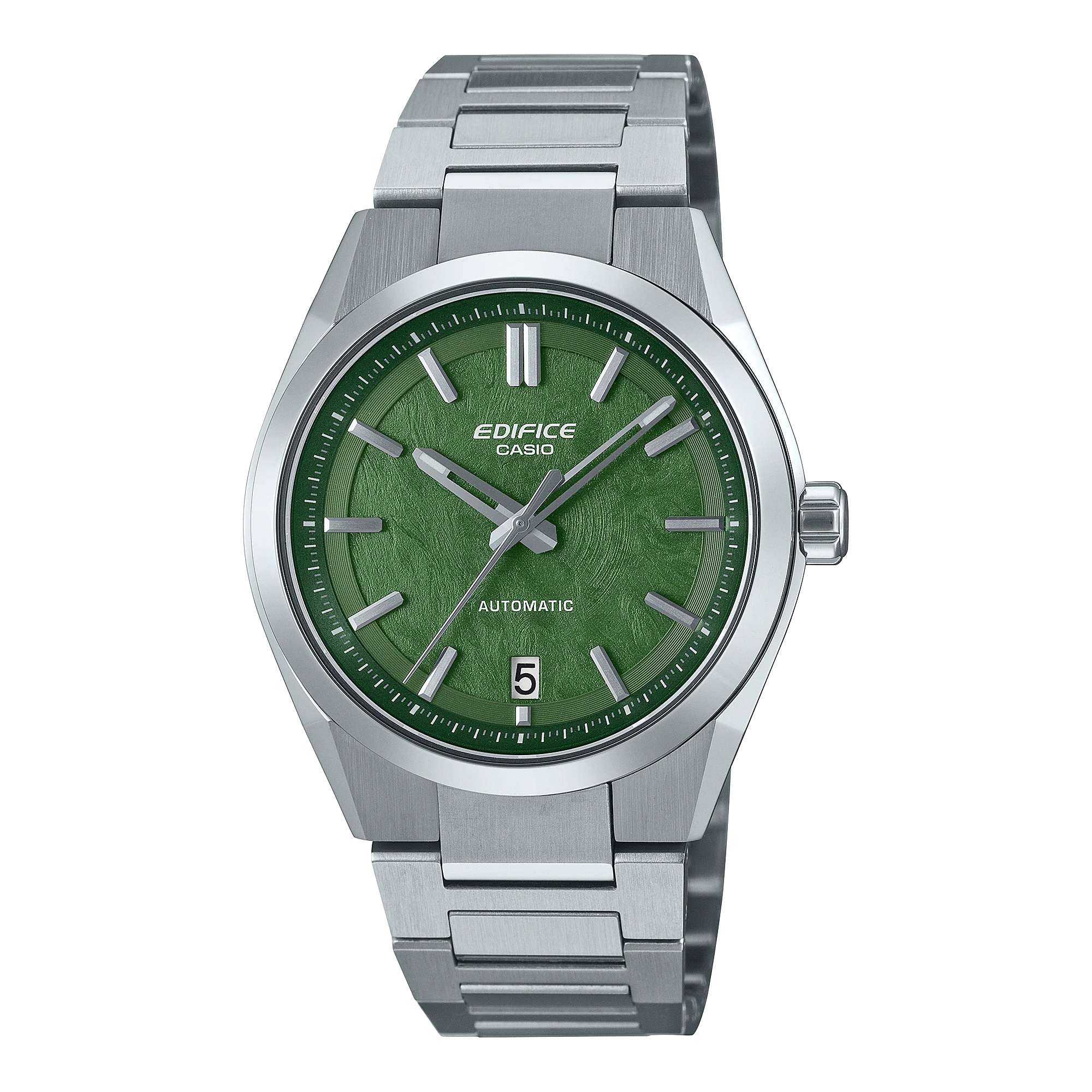
The green dial version adds a more playful or outdoorsy feel to the same steel configuration. Green has been trending in watch design for a while now, and this shade feels modern without being flashy. A great choice for someone looking for something different but still wearable, priced at ¥49,500 (~$350).
EFK-100D-7A
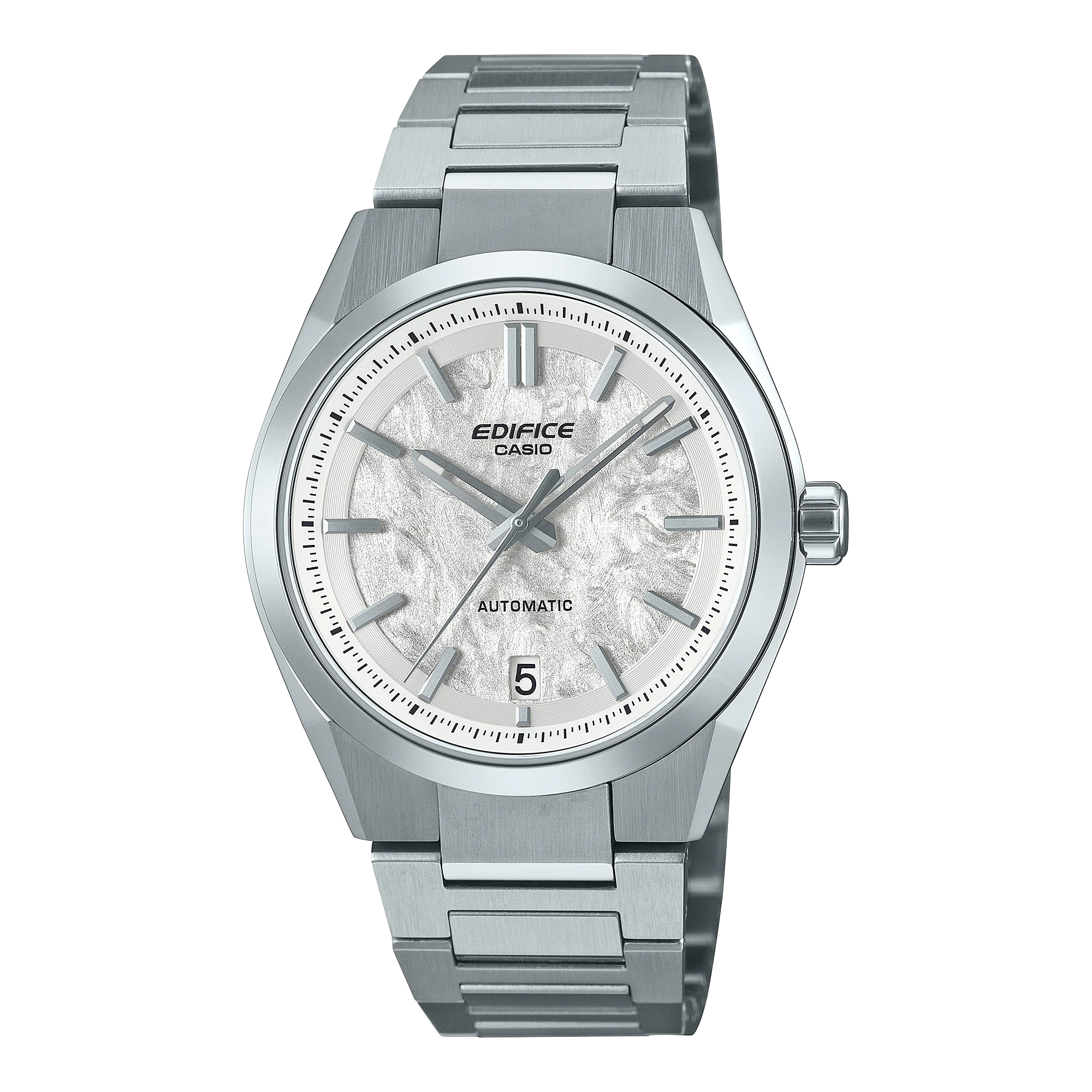
The most neutral and perhaps the most classic of the trio, the 7A comes with a white or silver-toned dial (depending on lighting). It gives the watch a cleaner, slightly dressier aesthetic. This could easily double as a budget-friendly “everyday office watch.” This model, like the previous two, is also priced at ¥49,500 (~$350).
EFK-100CD-1A – Forged Carbon
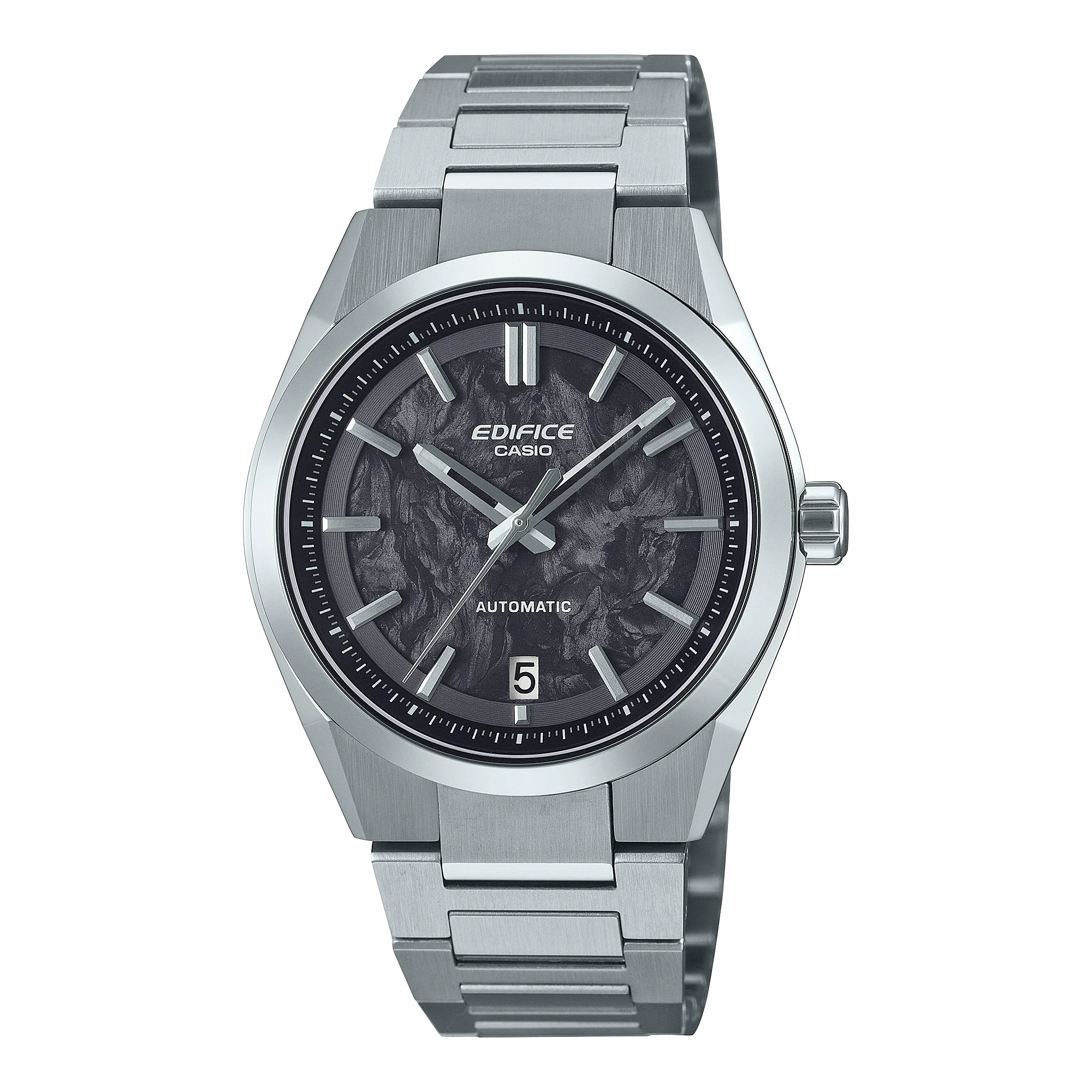
This version stands out with its carbon fiber dial housed in a standard stainless steel case and bracelet. While not as radical as the XPB model, it adds a distinct modern twist to the otherwise classic Edifice silhouette. The carbon texture gives the dial a more technical, motorsport-inspired aesthetic — making it feel more premium than its price tag might suggest.
At ¥55,000 (~$380) for the carbon dial, this model hits a sweet spot between everyday wearability and enthusiast appeal. You get sapphire glass up front, a 100m water resistance rating, and the same NH35-based Caliber 5755 automatic movement with hacking and manual winding.
This one is ideal for someone who wants something sportier and more eye-catching than the basic models, but without going full stealth mode.
EFK-100XPB-1A – Forged Carbon
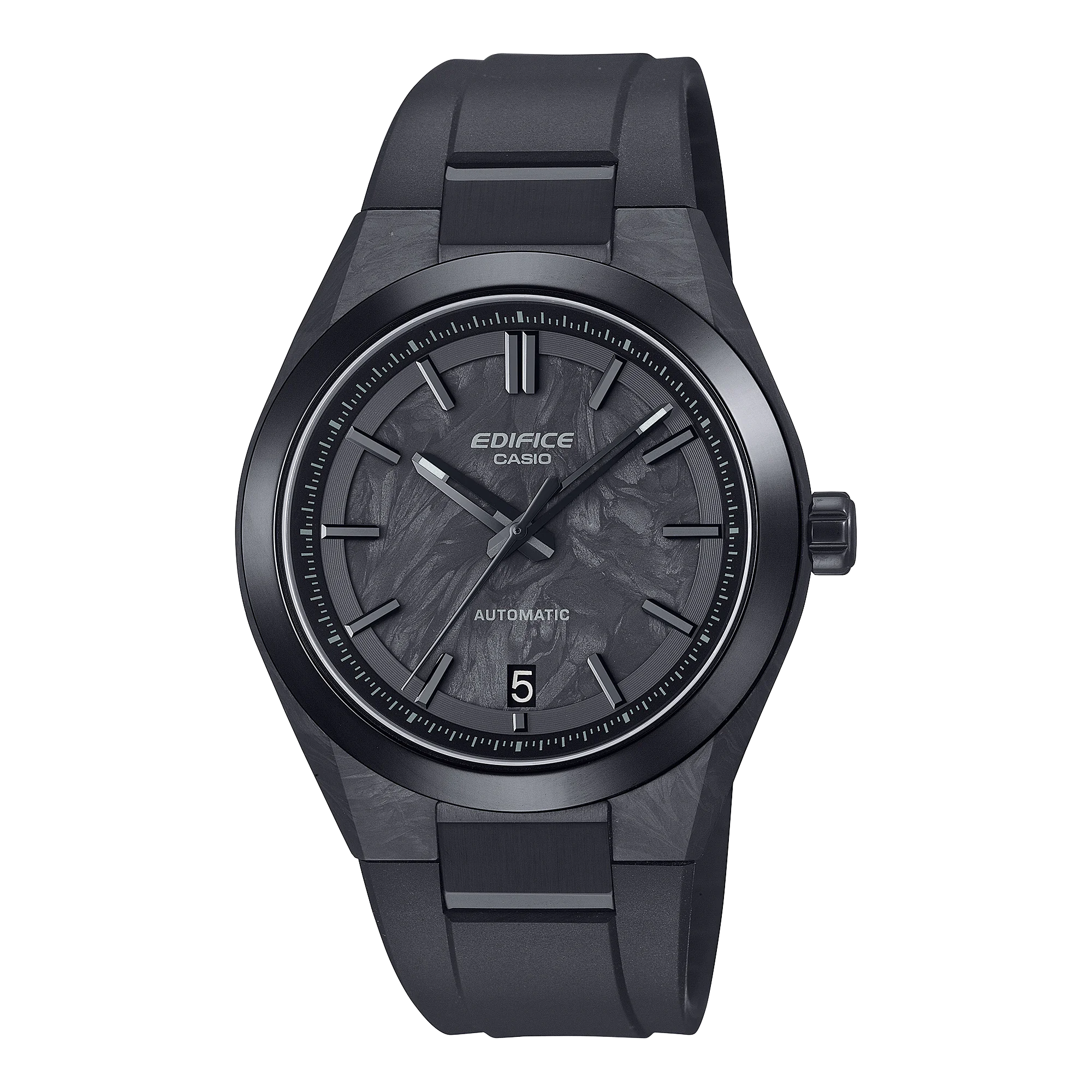
The EFK-100XPB-1A marks a first for Casio — not just as a mechanical watch, but as the first full carbon model outside of the G-Shock lineup. With both a carbon case and dial, it offers a unique visual texture and makes the watch noticeably lighter than its steel siblings. It’s a bold, motorsport-inspired design that pushes Edifice into new territory.

Both the case and dial are crafted from carbon fiber, giving the watch a distinctive visual texture. Thanks to the casting method, each dial features a slightly different carbon pattern, adding a subtle touch of individuality to every piece.
The watch leans fully into motorsport aesthetics — with an all-black, stealthy look complemented by a rubber strap. Unlike the metal bracelet variants, this one feels more performance-driven, channeling the racing spirit long associated with the Edifice brand.
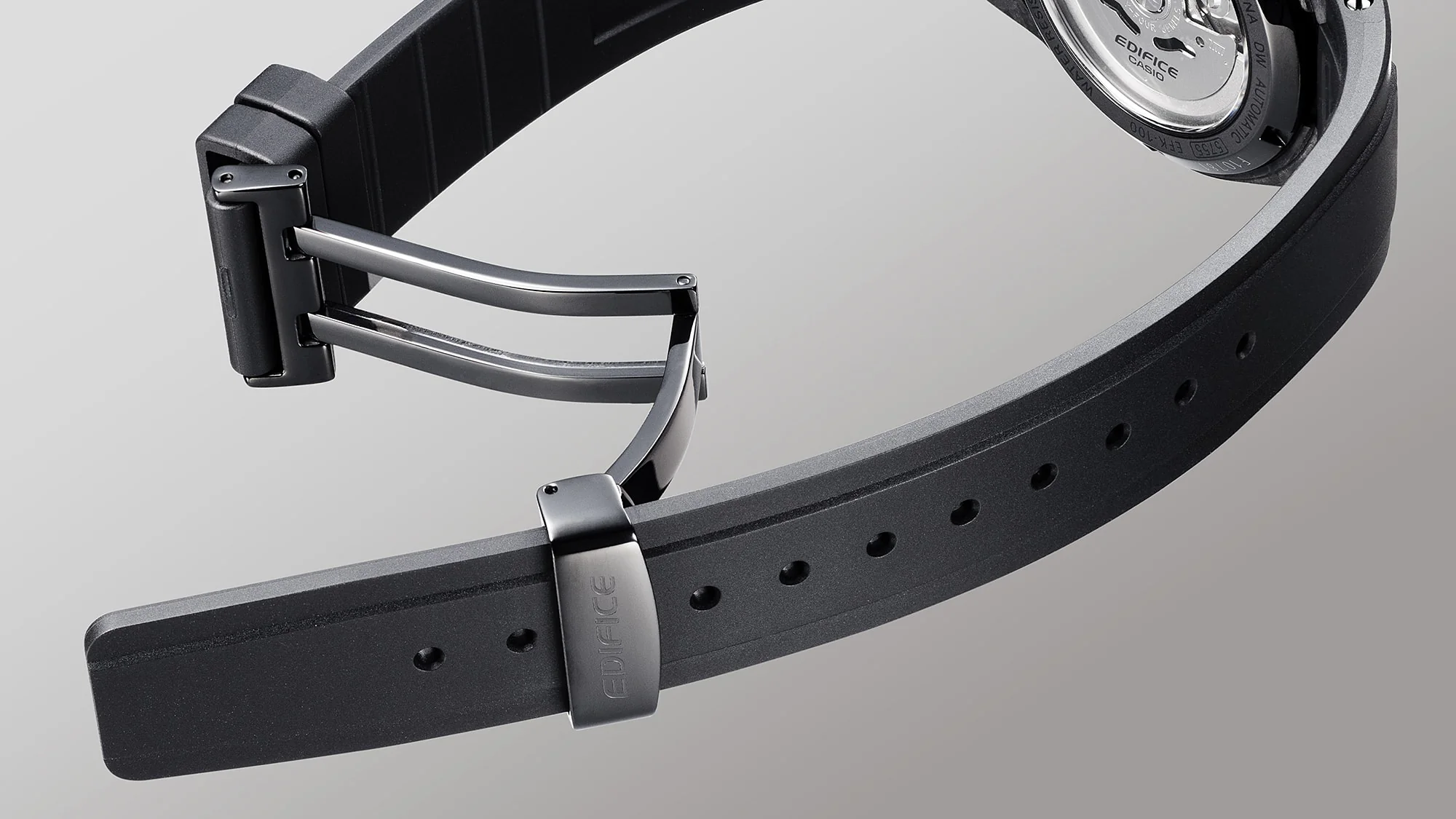
A screw-down caseback includes a transparent mineral glass window, showcasing the automatic movement inside — Casio’s 5755 module, based on the reliable Seiko NH35. The front crystal is sapphire, maintaining the durability expected at this price point.
At ¥74,800 (~$520), the XPB-1A is the most expensive of the five upcoming models, but also the most distinctive. If Casio aimed to make a bold statement with its first mechanical release, this is the model that does it.
A Closer Look at What’s Inside (and Outside)
Inside, all EFK-100 models are powered by the Casio 5755 module, which is based on the Seiko NH35 — a movement well-regarded in the affordable mechanical segment. It beats at 21,600 vibrations per hour (6 ticks per second), features both automatic and manual winding, and includes hacking seconds. With a power reserve of around 41 hours, it’s a dependable movement that many watch enthusiasts already know and trust.
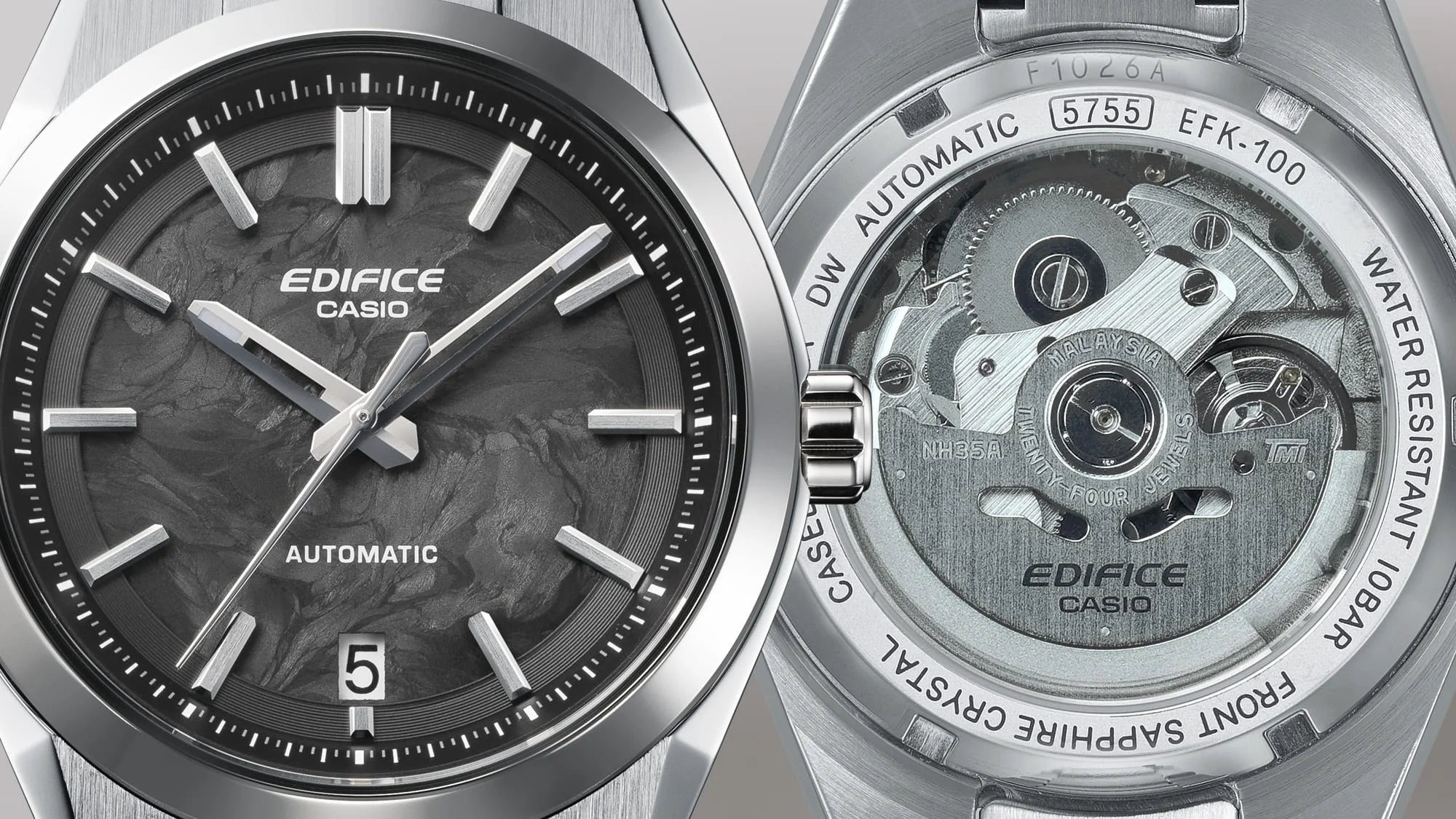
Externally, the watches feature a sapphire crystal up front and a mineral display caseback, giving a clear view of the movement within. Water resistance is rated to 100 meters, aligning with the everyday sport capability typical of the Edifice line. At 39mm in diameter, the case hits a sweet spot — modern but not oversized. Depending on the version, you’ll find a mix of polished and brushed finishing, adding texture and contrast to the design. Whether you go for full carbon, a carbon dial, or a more classic steel version, the specs across the board are solid for the price.
Market Context: Why This Makes Sense for Casio
Casio’s decision to launch a mechanical watch — and to do so under the Edifice name — may have surprised many. After all, this is a brand long associated with quartz precision, tech-forward features, and affordability. But when viewed against the backdrop of today’s watch landscape, the move starts to make real sense.
In recent years, the mechanical watch space has seen renewed interest from younger buyers — especially those seeking value-driven alternatives to the rising prices across the industry. Ironically, Seiko, whose NH35 movement powers the EFK-100, has steadily moved upmarket. Even their most basic mechanical watches — formerly around $200 — are now often priced closer to $400–600. Some years ago, you could walk into a shop and buy a mechanical Seiko 5 for well under $200. Today, that feels almost nostalgic.
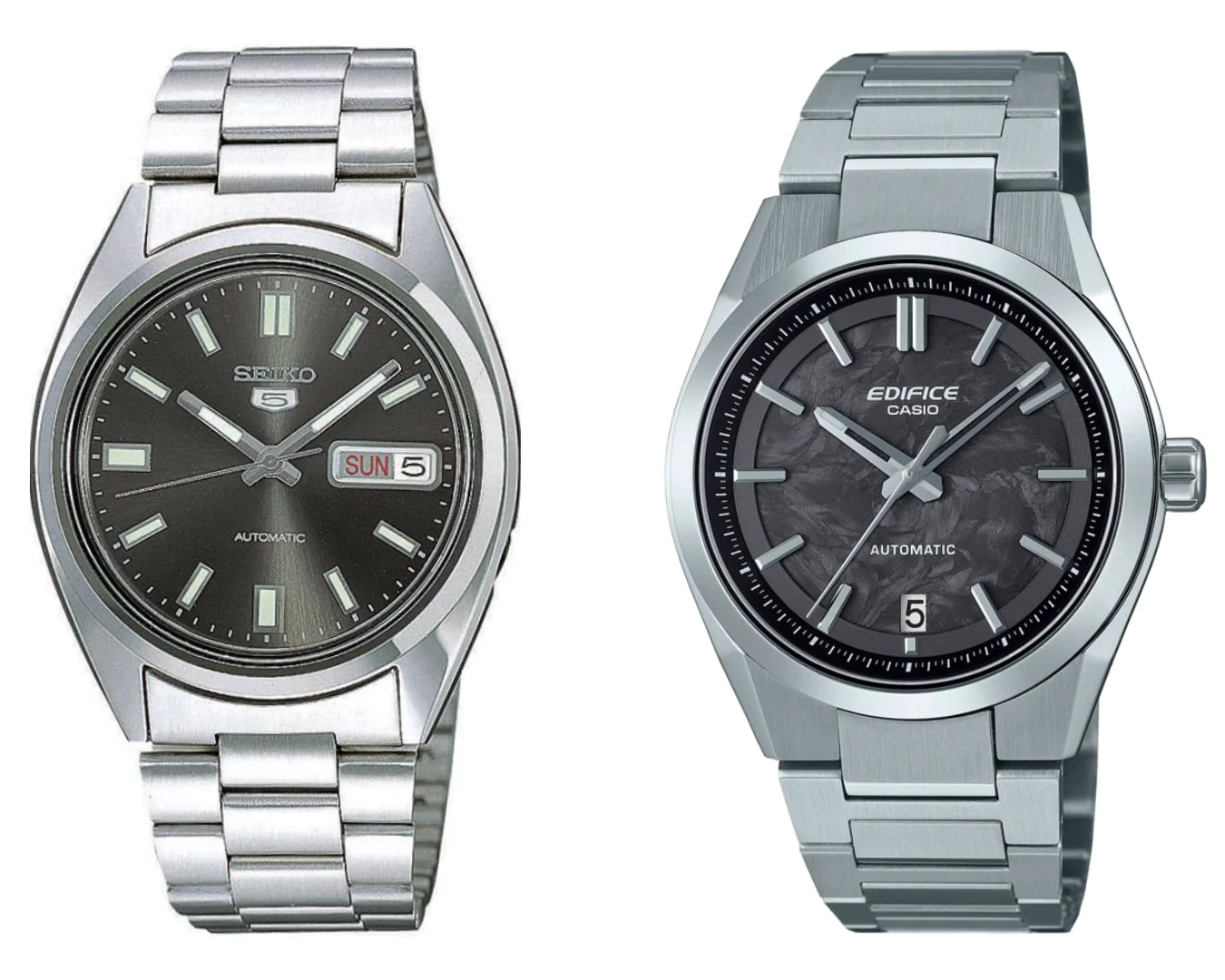
It’s created a strange moment — one that some have even dubbed the start of a “mechanical crisis.” Unlike the Quartz Crisis of the 1970s and ’80s, this isn’t about technological disruption — it’s about accessibility and affordability. Major mechanical brands are pricing out the very enthusiasts who made them relevant in the first place.
Other Japanese brands have filled parts of that gap. Citizen, for instance, has struck gold with the Tsuyosa — a sub-$300 mechanical sports watch that’s earned a cult following. Orient, too, remains a beloved name among collectors with value-packed models like the Kamasu, Mako, and Bambino, but they remain somewhat under the radar and are often difficult to find in physical retail locations outside of Asia and select enthusiast markets.
Meanwhile, the void left by Seiko hasn’t gone unnoticed by Chinese brands — many of which have aggressively targeted the entry-level mechanical segment with flashy specs and low prices. While some of these watches offer impressive value on paper, they frequently raise concerns about long-term durability, after-sales support, and design originality. For many buyers, there’s still a clear psychological and trust-based preference for a watch bearing a trusted name like Casio or Seiko on the dial, rather than an unknown Chinese brand.
This makes Casio’s entry into mechanicals feel both timely and strategic. With the brand’s global distribution network, decades of credibility, and a reputation for overdelivering on value, Casio is uniquely positioned to bring mechanical watchmaking back to the mainstream — and to do so in a way that feels trustworthy and exciting.
That being said, the pricing feels a bit high. Starting at $350, it seems to miss an opportunity to fill the potential market gap. In this higher price range, there’s already plenty of competition, while the more affordable segment, albeit primarily in the quartz category has long been Casio’s territory. So, while these watches aren’t necessarily bad value, the pricing feels somewhat elevated and like a missed chance to dominate an underserved niche.
Final Thoughts
Casio’s EFK-100 series represents more than just a new product launch — it’s a strategic entry into a shifting watch market. The decision to embrace mechanical watchmaking under the Edifice banner may surprise some, given Casio’s longstanding reputation for quartz innovation and affordability. Yet, this move aligns perfectly with evolving consumer needs and market dynamics.
With established brands like Seiko moving upmarket and mechanical watches becoming less accessible to younger or budget-conscious buyers, there is a growing gap in the affordable mechanical segment. The “mechanical crisis” some have identified highlights this tension: traditional mechanical watches are increasingly out of reach for the enthusiasts who fueled their popularity decades ago.
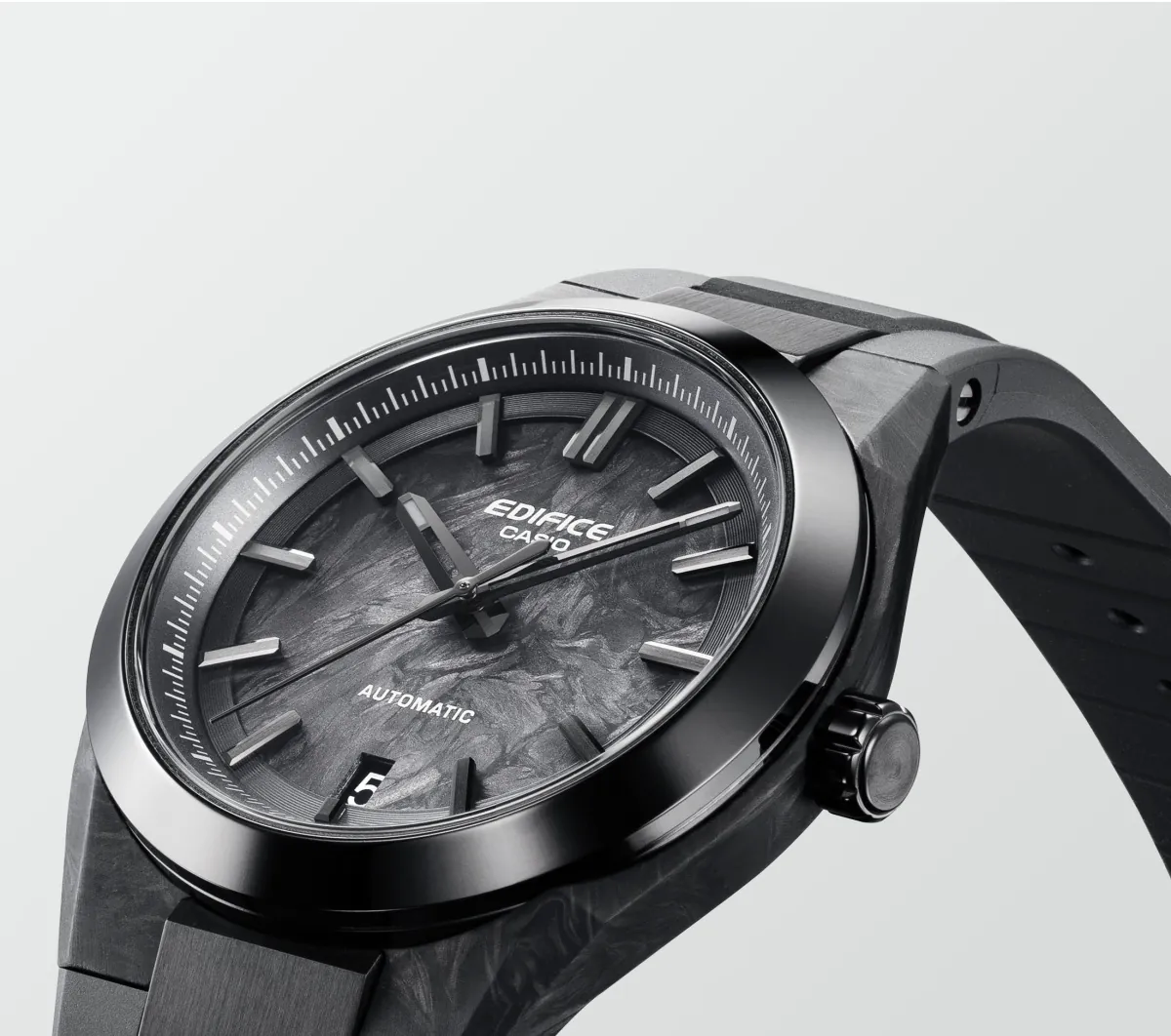
Casio’s approach — combining a trusted name, solid mechanical foundations with the Seiko NH35-based 5755 module, and a lineup that spans classic steel to bold carbon fiber — taps directly into this underserved market. Beyond technical specs, Casio offers credibility, worldwide distribution, and value that appeals to both newcomers and seasoned collectors seeking reliable, stylish mechanics without breaking the bank.
The EFK-100 is a timely statement — a signal that mechanical watches still have room to grow and evolve, even in a world dominated by smartwatches and quartz precision. For Casio, this is both a calculated risk and a bold new chapter, one that could well redefine how accessible mechanical watchmaking can be in the years to come.
Specifications
• Case Diameter: 39mm
• Water Resistance: 100 meters (10 bar)
• Crystal: Sapphire (front), mineral (exhibition caseback)
• Movement: Casio Module 5755 (based on Seiko NH35)
• Automatic + manual winding
• 21,600 vibrations per hour
• Hacking seconds
• ~41-hour power reserve
• Bracelet/Strap Options:
• Stainless steel bracelet (EFK-100D-2A, 3A, 7A)
• Rubber strap (EFK-100XPB-1A)
• Materials:
• Stainless steel case (EFK-100D variants)
• Carbon dial (EFK-100CD-1A)
• Full carbon case and dial (EFK-100XPB-1A)
• Price Range:
• ¥49,500 (~$350) for steel models
• ¥55,000 (~$380) for carbon dial model
• ¥74,800 (~$520) for full carbon model
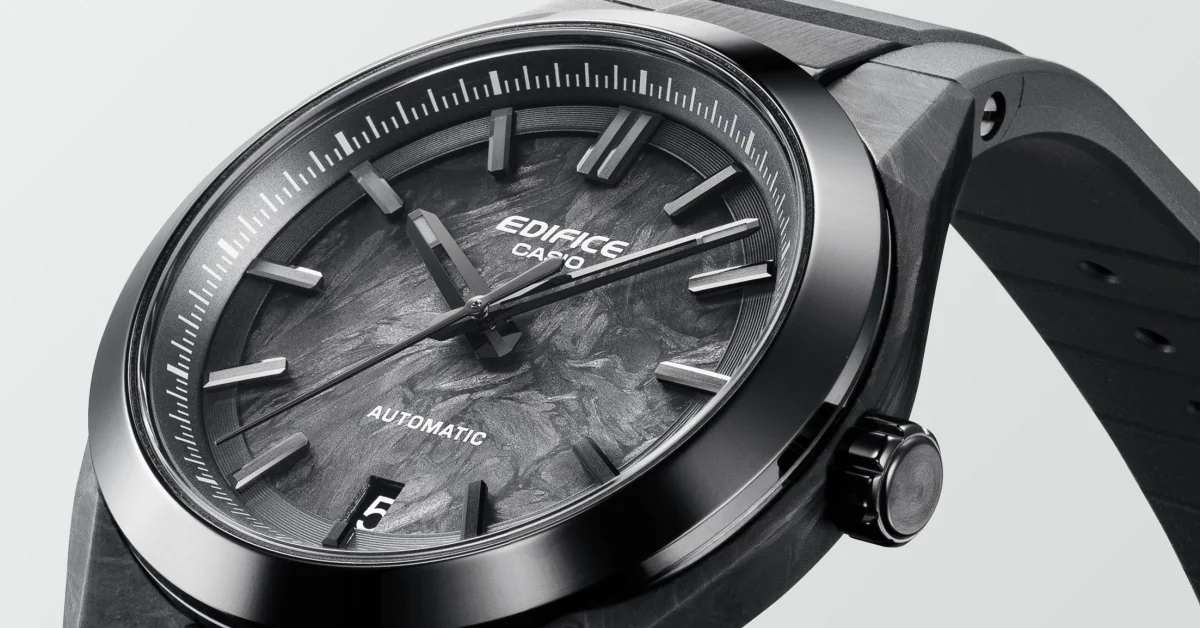
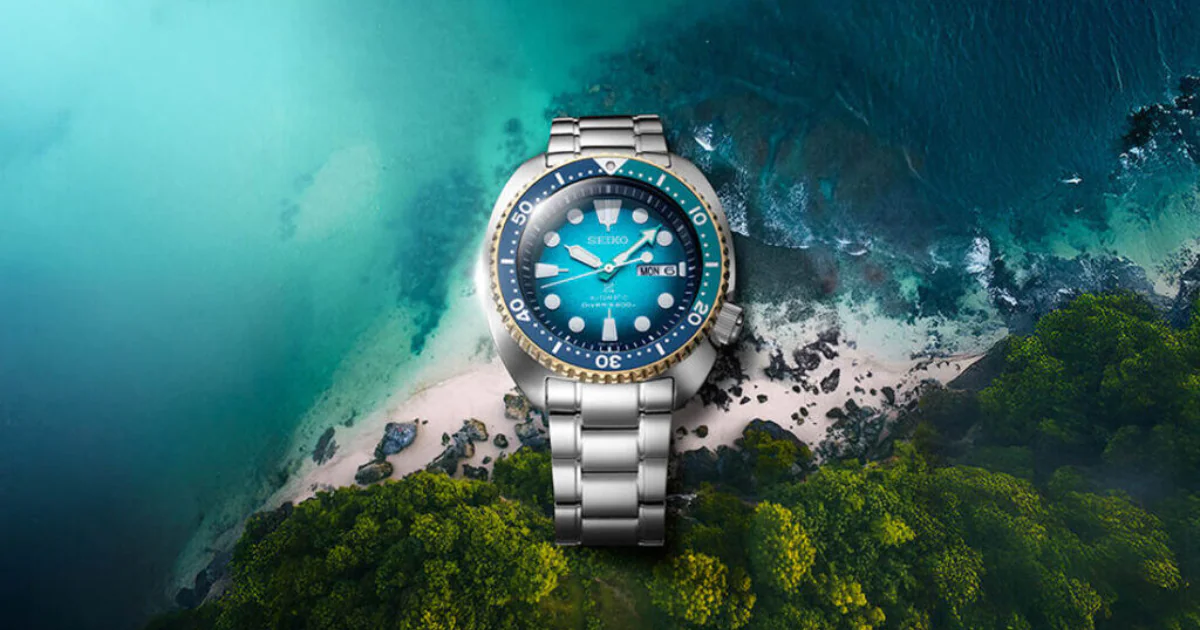


Leave a Reply